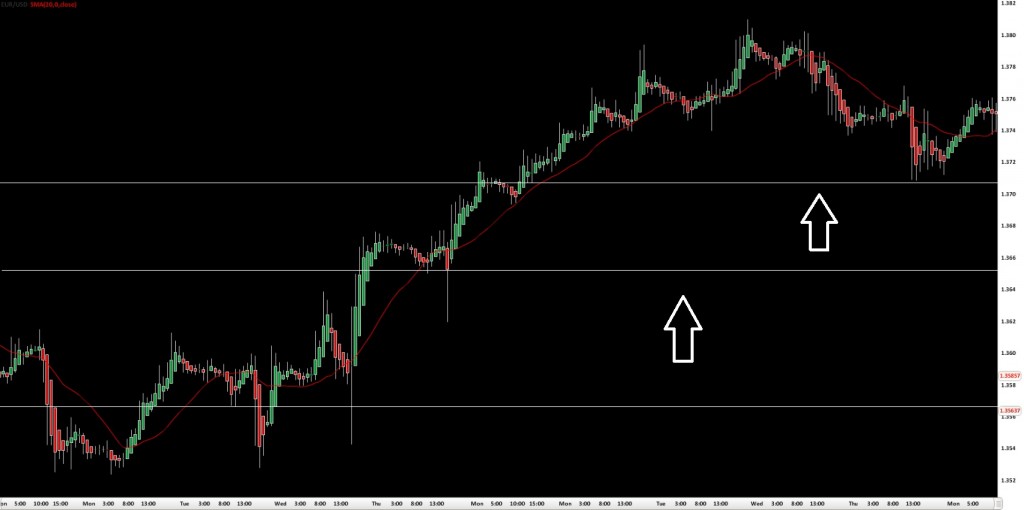Trailing stops in Forex
You will learn about the following concepts
- What do we mean by “trailing stops”?
- How to use them?
- and more…
Once a protective stop is in place, the price action will either trigger that stop or the trade will begin to register gains. After a certain amount of profit has been accumulated, the trader will need to maximize this profit without giving up too much of what has been gained. In such a case the trader will use a trailing stop in order to lock in his/her gain.
What are they?
Trailing stops are stop loss orders, which follow the course of trade and move in favor of a traders either long or short position. It is more flexible than the fixed stop loss, because it follows a currency pairs value direction and does not need to be manually reset like the fixed stop loss.
How are they used?
A trailing stop can be set at a defined percentage away from a currency pairs current market value. In case an investor enters into a long position, the trailing stop needs to be set below the currency pairs current market value. In case an investor decides to enter into a short position, the trailing stop needs to be set above the currency pairs current market value. This stop is usually used in order to secure what has been gained by enabling the trade to remain open and continue gaining as long as the value of the currency pair is moving in the right direction (depending on the position an investor has taken). If the value of the currency pair suddenly changes its direction and moves by a specified percentage, the trade will be closed, limiting losses.
Let us provide an example. A trader decides to go long the USD/JPY pair with 5 000 units at 104.00 and sets a 2% trailing stop order (or Good Til Cancelled order) to secure his/her position. This means that if USD/JPY declines by 2% or even more, the trailing stop order will be triggered, limiting losses. Over the next month the pair increases in value, reaching 105.50, thus gaining 1.44%. The trader is obviously enjoying the profit he has registered for the moment, but expresses concerns that the pair may retrace its gains. As his/her trailing stop remains in place, if the currency pair declines 2% or more, say within the next week, the trailing stop will be triggered. The trader may decide to tighten the trailing stop to 1.50%, allowing his/her trading position more room to run.
Over the next few trading sessions, USD/JPY appreciates further, reaching 106.00, but then suddenly tumbles 1.50% within a single trading day to 104.40. This 1.50% decrease would trigger the trailing stop and assuming the order was executed at 104.40, the trader would lock-in 40 pips of profit.
Have in mind that if the pair has recorded a drop of, say 0.55% that same day, the trailing stop would not have been triggered, because it has been set to 1.50%. Therefore, it is important to set the trailing stop percentage at a level that is neither too tight, nor too wide. If the stop is placed within a distance too close to the current market price, the trade would be stopped before it has a chance to develop. If the stop is placed within a distance too far from the current market price, if triggered, this could cause the trader to leave too much money on the table.
It is also possible to adjust trailing stops manually with the help of technical indicators such as moving averages, channels or trend lines.
In case a trader has entered into a long position, as the value of a currency pair received support at the moving average, he/she could adjust the stop loss under the moving average as the trade develops. However, it is a matter of personal choice when and how to move the stop loss using the moving average. The trader may prefer to move the stop loss in a sequence of stages. On the other hand, he may decide to move the stop loss each time a new candle begins to form.
Here we can see how to move the trailing stop in stages below the moving average, as the value of EUR/USD surges.
